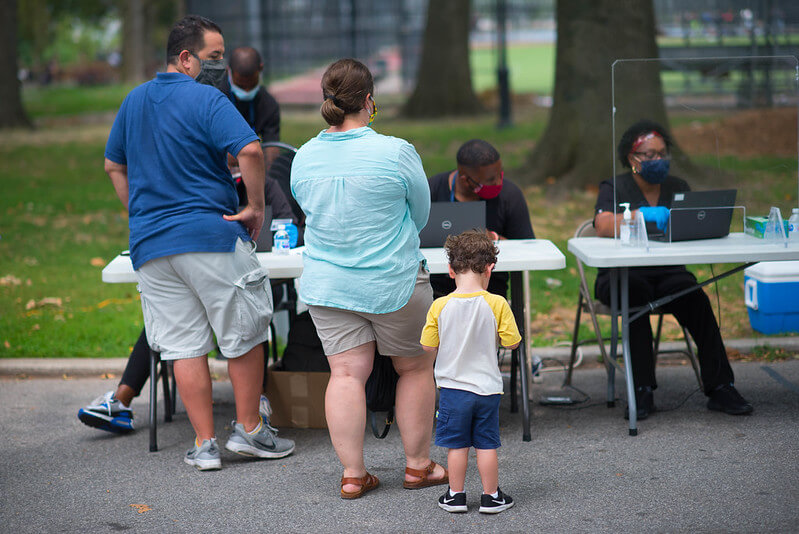Amid a spike in Sunset Park COVID-19 cases, local community leaders are blasting the city’s testing efforts as “absolutely not enough” — saying the new testing sites are either too inconveniently located, or too small to handle the influx of new patients.
“The locations are problematic,” said Cesar Zuniga, the chair of Community Board 7.
After tests revealed more than 220 new cases in the area during a short span last week, Mayor Bill de Blasio promised to “saturate” the area with new efforts — including opening new sites, door-to-door canvassing, and targeted robocalls.
Much of the new Sunset Park COVID testing capacity has been centered around the massive manufacturing campus at the waterfront Brooklyn Army Terminal — which, given the need to cross a perilous stretch of Third Avenue from all points east, is difficult to reach for both seniors and those who lack access to a car, argued the community leaders.
“If you’re a senior citizen or somebody who has mobility issues and you don’t have a car like the majority of the residents in my community, that might not be such an easy place to get to,” said District Manager of Community Board 7 Jeremy Laufer.
The city also set up two other locations, both of which the local civic gurus claimed are problematic — first at Eighth Avenue and 44th Street, which is technically on the Borough Park side of the avenue, and second at 44th Street and Sixth Avenue, which can only handle 100 tests per day.
“There is just such limited capacity,” Zuniga said. “It’s not enough, it’s absolutely not enough.”
Zuniga claimed that locals had waited on line for hours in sweltering temperatures to get tested at the new locations, and that he witnessed some older and disabled residents give up and go home — which could obscure the numbers surrounding the increase in Sunset Park COVID-19 cases.
To make up for the hard to reach testing centers, Zuniga and Laufer say the city should set up testing sites near the neighborhoods transit hubs, such as the 36th Street, 59th Street, and 8th Avenue subway stations, and should utilize large open spaces like the Sunset Park Recreation Center and the Grand Prospect Hall to increase capacity.
The delays in testing could have been avoided if City Hall had consulted with community groups on the ground who know the community well, according to Zuniga, but the mayor’s office took a more cookie-cutter approach, the community board chair said.
“The city has to be mindful that any kind of outreach, whether it’s materials or human resources that they’re sending out into the community, they need to really pay attention and utilize the local expertise, stakeholders, opinion leaders, and trusted people in the community,” he said. “We have a community of immigrants that because of the national climate are totally distrustful of the government. You can’t just send people who are not familiar with the community or materials that don’t reflect the languages of the community to try and do effective outreach.”
During a press briefing Monday, the mayor announced plans for a shuttle bus that will ferry Sunset Park residents from Sixth Ave and 44th Street to the Army Terminal, but announced no immediate plans to increase capacity in the neighborhood. De Blasio also boasted that city contract tracers had knocked on over 7,300 doors in the neighborhood so far, and encouraged all Sunset Park residents to seek out testing if they had not yet done so.
The civic leaders say the lacking response to the uptick in Sunset Park COVID-19 cases is just the latest example of their neighborhood being overlooked by City Hall — only this time there are lives on the line.
“The city has for decades treated us less,” said Zuniga. “Enough is enough, we’re talking about the lives of people, not just being inconvenienced because of an unfinished park.”
For more information on how and where to be tested, visit the city’s COVID-19 information portal online here.
This story first appeared on our sister publication brooklynpaper.com.






























